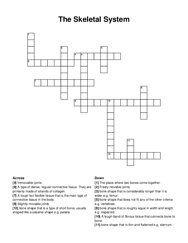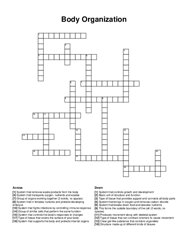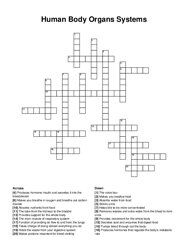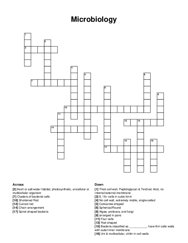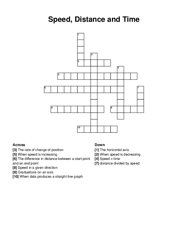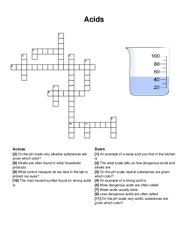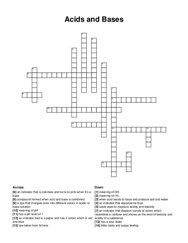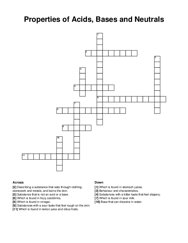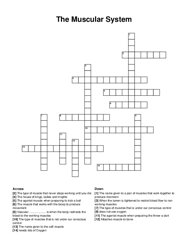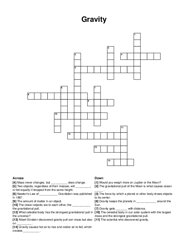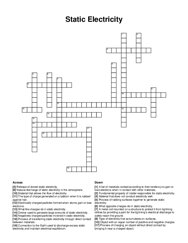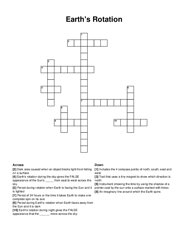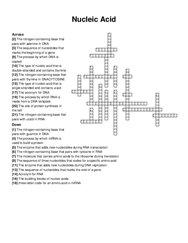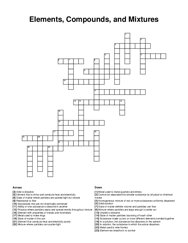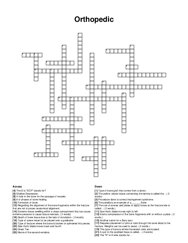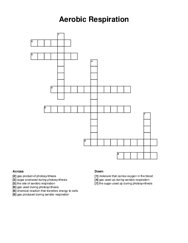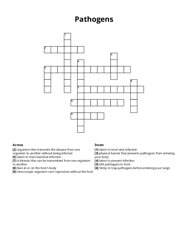Categories
- Agriculture / Farm
- Animals
- Arts / Crafts
- Beauty / Fashion
- Books / Literature
- Business / Finance
- Cities / Places
- Computers / IT
- Ecology / Climate
- Electronics
- Energy / Utilities
- Food / Drinks
- General
- Geography
- Geology
- Health / Fitness
- History
- Home / Garden
- Jobs / Education
- Kids / School
- Law / Government
- Music / Movies / TV
- News / Media
- Occasions
- Christmas
- Easter
- Halloween
- New Year
- Saint Patrick's Day
- Thanksgiving
- Valentine's Day
- Outdoors
- Religion / Belief
- Safety / Prevention
- Science
- Astronomy
- Biology
- Chemistry
- Physics
- Seasonal
- Society / Culture
- Sports
- Tools / Equipment
- Travel / Tourism
- Vehicles
Science Crossword Puzzles
Free printable science crossword puzzles. Download pre-made or create your own Crossword using our crossword maker. Simply download, print and start playing or play online.
slightly movable joints, the place where two bones come together, bone shape that is thin and flattened e.g. sternum, freely movable joints, bone …
type of tissue that can contract (shorten) to cause movement, type of tissue that provides support and connects all body parts, type of tissue that …
helps bile to be more concentrated, produces hormone insulin and secretes it into the bloodstream, the main muscle of respiratory system, secretes …
a piece of iron that has its component atoms so ordered that the material exhibits properties of magnetism, an electromotive force or potential …
there is another prime mover for jaw closure except temporalis muscle, three muscles that end with "glossus", move this part of the body, …
algae, protozoa, and fungi, fresh or salt water habitat, photosynthetic, unicellular or multicellular organism, corkscrew-shaped, spiral-shaped …
when data produces a straight line graph, when speed is increasing, when speed is decreasing, the rate of change of position, speed in a given …
lowercase r is an example of a _ trait, a mule is an example of a.., skin color, height, eye color are examples of.., the allele combination or …
alkalis are often found in what household products, the what scale tells us how dangerous acids and alkalis are, the main hazard symbol found on …
meaning of ph, when acid reacts to base and produce salt and water, has a ph level of 7, an indicator that is colorless and turns to pink when …
behaviour and characteristics, which is found in stomach juices, which is found in fizzy cooldrinks, base that can dissolve in water, substances with …
the agonist muscle when preparing the throw a dart, the type of muscle that never stops working until you die, attaches muscle to bone, the type of …
type of cells between seminiferous tubes that make testosterone, protective outside membrane of the sperm that gets into the egg, type of cell that …
unit of frequency, one wave per second, speed at which wave travels (d/t), object vibrating at or near a resonant frequency of a 2nd object causes the …
gravity keeps the planets in _ around the sun, the closer objects are to each other, the _ the gravitational pull, the amount of matter in an object, …
little things in the cells, digestive chemical which breakdown waste, the powerhouse of the cell-cellular respiration, a group made out of tissue, …
fundamental property of matter responsible for static electricity, negatively charged particles involved in static electricity, type of electricity …
cells with 1 set of chromosomes, mitosis time when sisters pull apart, reproduction that needs no mate, part of inter-phase where dna is replicated, …
greek for light, constellation that means bull, visible layer of sun during an eclipse, the dog star, constellation that means hunter, center of the …
molecules made by golgi, found in both plant and animal cells, breaks down old cells, acts like a janitor and found mostly in animal cells, power …
period during rotation when earth is facing the sun and it is lighted, includes the 4 compass points of north, south, east and west, period during …
inventor of the light bulb, known for alternating current (ac) power, revolutionized car manufacturing with the assembly line, pioneers of the first …
the building blocks of nucleic acids, the nitrogen-containing base that pairs with adenine in dna, the nitrogen-containing base that pairs with …
will not break or snap when a large force acts on it, can be stretched into a wire, a lattice has particles arranged in _ , an atom after it has lost …
side effects are nephrotoxicity and ototoxicity, semi-synthetic, broad-spectrum antibiotics that are structurally related to the penicillins, …
able to dissolve, element we breathe in to survive, process where particles septa and spread evenly throughout mixture, state of matter where …
this type of bone is where haversian units are located, type of fracture where the bone is broken or splintered into pieces, shallow depression, a …
gas used up during aerobic respiration, gas produced during aerobic respiration, the site of aerobic respiration, the sugar used up during …
a gain of electrons (or decrease in oxidation number), the electrode where reduction occurs, a number representing the charge an atom would have if …
organism that transmits the disease from one organism to another without being infected, taken to treat viral infection, physical barrier that …
